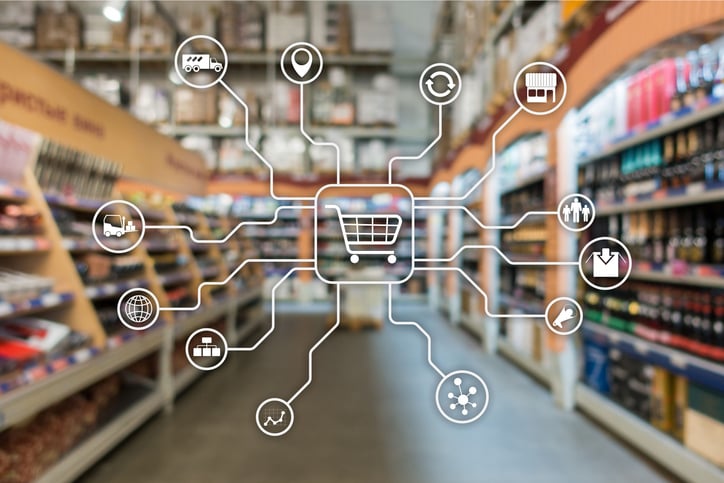Retail Global Sourcing Strategies During Volatile Times

From a global supply chain perspective, the biggest uncertainty retailers and brands face in 2025 is the impact of tariffs. While the full outcome of new tariff policies remains unclear, organizations are bracing for potential cost disruptions by increasing their agility and refining supply chain models.
Many are already making significant adjustments — a recent survey of 579 retail, consumer packaged goods (CPG) and wholesale professionals across multiple countries found that as tariffs loomed, 60 percent of companies were overhauling their supply chains in response to complex global trade relations.
To navigate the coming year of volatility, brands and retailers are using such strategies as optimizing cost structures, leveraging advanced technologies and partnering with suppliers, TradeBeyond’s Retail Sourcing Report: 2025 Insights & Indicators revealed.
Strategy 1: Optimize Cost Structures
In this climate of tariff volatility, companies need to take a proactive approach to cost management. Consumer product businesses can counter the impact of tariffs by ensuring they have fully diversified their supply chains, are running efficiently and have weighed the pros and cons of passing costs onto consumers.
A study by the National Bureau of Economic Research looked at the impact of the 2018 U.S. tariffs on washing machines across sourcing countries. It found that prices rose by around 12 percent across countries, including for U.S.-produced washing machines and dryers. The tariffs resulted in the creation of 1,800 domestic jobs, but the higher product prices cost consumers US$1.5 billion more. In effect, each new job ended up costing more than $815,000 to create (not accounting for taxes).
Given the widespread tariffs imposed by the Trump administration, we can assume that prices for products will be higher. To counter the impact, retailers and brands can employ creative strategies such as adjusting prices across products, transferring costs to consumers where brand loyalty is strong and using hedging strategies to protect against currency and commodity price fluctuations.
Strategy 2: Leverage Advanced Technology
While still in a nascent stage, the integration of artificial intelligence (AI) and predictive analytics is readying to be a game changer for supply chain operations. These technologies promise to proactively help companies predict demand fluctuations, forecast potential disruptions, and optimize procurement processes in real time. AI is expected to bring efficiency improvements across most of the supply chain.
Retailers such as Walmart have used predictive analytics to forecast inventory needs and reduce delivery times by up to 20 percent. Integrating AI helped Walmart streamline its operations and reduce inventory costs, with savings of $18 billion a year. One research study highlighted how AI-driven analytics could save the retail sector $300 billion annually.
Advanced technologies help businesses respond to market changes, improve overall efficiency and reduce costs, ensuring a resilient and agile supply chain and value addition in dynamic trade environments. Alongside upgrading technology, upskilling employees to work alongside advanced technologies maximizes their potential.
Strategy 3: Broaden Sourcing Networks
Diversifying the supply base is not a new concept for most companies with mature global sourcing programs. In recent years, retailers and brands have learned hard lessons from relying too much on Chinese or other single country suppliers.
Increased trade tension and a climate of aggressive tariffs have further made the case for supplier diversification. As highlighted by GEP, diversifying supplier bases is key to enhancing supply chain resilience while reducing dependency risks.
Chinese suppliers are already well established in such countries as India, Vietnam, Malaysia and even Africa. Eastern Europe and Latin America have also grown in recent years as alternative or complementary sourcing destinations to mitigate risk.
A priority for companies is finding a way to ensure supply chain continuity, establishing long-term agreements with competitive pricing, and further stabilizing cost structures. Smart companies are also leveraging the available support from within supply chain networks, using third-party logistics providers to streamline diversification.
Strategy 4: Bolster Supplier Partnerships
Strong supplier relationships are essential to contingency plans for navigating trade uncertainties. Engaging in collaborative planning, risk-sharing arrangements, and diversified sourcing strategies can foster a more resilient supply network. Openly sharing sustainability initiatives and performance metrics with stakeholders can build trust and differentiation. Robust reporting practices reinforce credibility while ensuring adherence to emerging regulatory standards.
A study by PwC found that companies with deeply integrated supplier partnerships are 20 percent more likely to maintain stable operations during periods of market volatility.
Such strategic alliances facilitate rapid adaptation to unforeseen challenges while ensuring continuity in supply. Diversifying supplier partnerships also reduces localized supply chain risks.
Strategy 5: Embrace Nearshoring and Onshoring
No question, the case for nearshoring and onshoring has grown in recent years, driven by higher costs, supply chain disruptions such as the pandemic and geopolitics — and the recently imposed tariffs. In theory, companies can gain greater control over their supply chains, allowing them to further streamline operations and respond quickly to shifting trade policies.
Nearshoring may not always be the best solution, but can yield benefits such as shorter lead times, faster response to consumer demand, reduced transportation costs, and improved regulatory compliance. Companies also gain the flexibility to find alternate sources for components and materials within their own region and can more easily customize products to suit local preferences.
***
Amid escalating trade complexities and unpredictable global markets, building resilient supply chains requires a multifaceted, data-driven approach. By broadening sourcing networks, embracing localized production, optimizing cost structures, using advanced technologies and nurturing robust supplier relationships, companies can not only mitigate trade risks but also position themselves for sustainable long-term growth.


